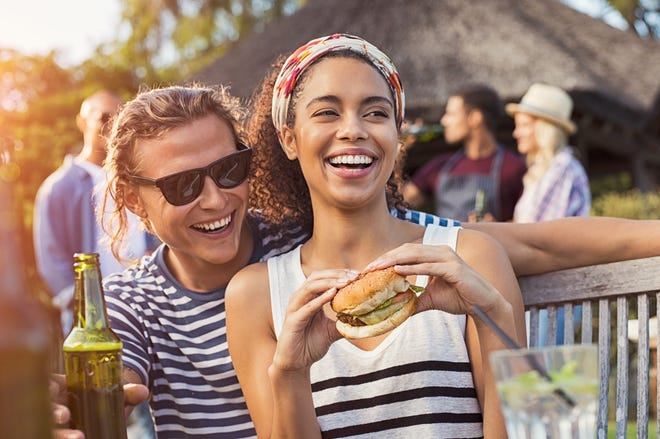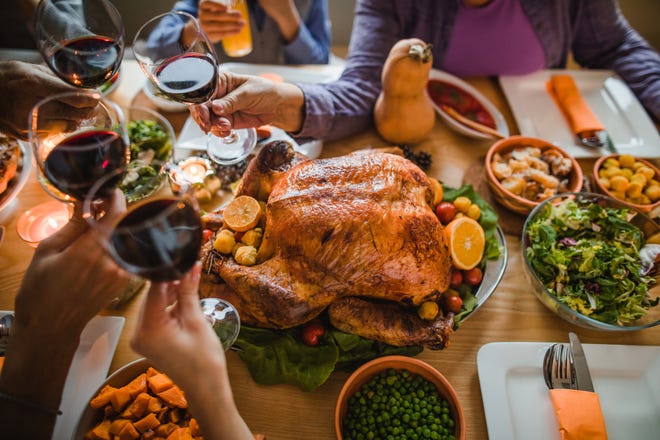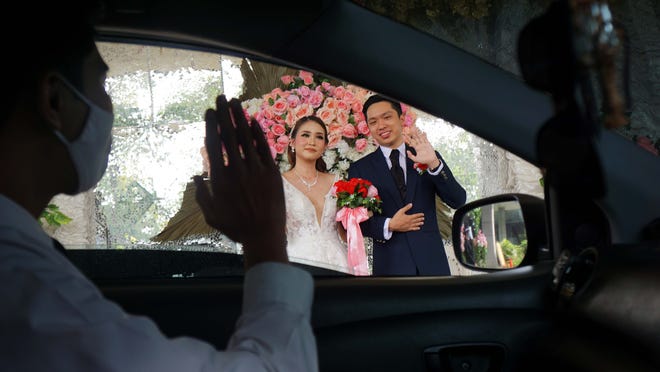Images of packed beaches, lakes and bars have made the rounds on traditional and social media for much of the summer, drawing scorn from those concerned about the coronavirus spreading among those crowds.
Less prominent but also troubling are the growing instances of case clusters arising from smaller gatherings.
Contact tracing is yielding information about the sources of infections as the U.S., by far the world leader in COVID-19 cases and deaths, continues to grapple with how to keep its population safe while propping up a flagging economy. More than 180,000 Americans have been killed by the disease.
The hasty reopening of businesses across much of the nation following the spring shutdown was largely blamed for a summer surge in infections, but it appears social functions of various sizes among relatives, friends and co-workers have been a contributing factor as well.
Public health experts are sounding the alarm as the Labor Day weekend approaches.
“People don’t think of it in the same way as the (President) Trump rally in Tulsa, a bunch of people on the beach or in the bars, but these small events add up to a lot. It’s just invisible,’’ said Dr. Peter Chin-Hong, a professor of medicine at the University of California-San Francisco who specializes in infectious diseases.
There’s no generally accepted definition of what’s a small gathering – it may range from five to 30 people – and the vast majority of these activities are taking place behind closed doors. That makes it difficult to garner hard data about them.
Double trouble:Coronavirus Watch: Evacuating from Hurricane Laura amid COVID-19
In late July, Maryland Gov. Larry Hogan said contact tracing revealed 44% of those testing positive for the virus in the state reported attending a family activity and 23% a house party, but the size of the events was not specified.
Still, there has been plenty of anecdotal evidence supporting the notion that getting together with people outside the immediate household, even in fairly limited numbers, can lead to a rash of infections. Chin-Hong said several of the COVID patients he has treated believe they caught the virus at barbecues.

Weddings have been even more troublesome, including a 100-guest event in San Francisco in early July that resulted in at least 10 people contracting the virus, among them the bride and groom.
Smaller events such as family, office and graduation parties have yielded COVID-19 cases as well.
In Alabama, eight of the 11 relatives who went to a lake house together in July later tested positive for the coronavirus.
In the Washington, D.C. area, the host of a June backyard dinner for around 25 came down with COVID-19, as did some of her guests.
And in Houston, seven members of a family that went out for a Fathers’ Day meal developed COVID-19.
Education issues:Chaos reigns in some schools with in-person learning. Many kids are learning at home.
“Small gatherings are a concern because there’s so many of them. They may account for a much greater proportion of the cases than we think right now,’’ said Dr. George Rutherford, a colleague of Chin-Hong’s at UCSF and the principal investigator for California’s contact tracing program.
Rutherford emphasized the need for those planning to attend or host functions on Labor Day weekend to practice social distancing and wear masks as much as possible, but he’s even more wary of what may be in store after Thanksgiving.
Extended families traditionally convene on that holiday, often after traveling from far away, and sit around for long stretches, be it eating or watching NFL games on TV. The dinners are almost always held indoors, where the limited ventilation makes it easier to contract the virus.
“Everybody’s going to be there with their belts undone and the top button off their pants, snoring and laying without masks on watching football in some tiny little den,’’ Rutherford said. “It’s not a pretty picture. There could be a lot of transmission. And Christmas is going to be exactly the same. It’s unfortunate, but this is not the year for family gatherings.’’
Given human nature, though, it’s nearly impossible to prevent them.

Dr. Matt Lambert, an emergency room physician based in Washington, D.C., said he would advise against any gatherings bigger than 25 people, small enough for the hosts to inquire about symptoms before the event.
Or those seeking to congregate for special occasions could take extreme measures, like the couple Lambert heard of who held their wedding at a zoo, with the staff enforcing distancing regulations.
Even then, it’s hard to keep people apart.
Loading up:Americans are buying Mace, RVs, bulk foods as COVID-19 pandemic drags on
“We’re not made that way,’’ Lambert said. “You get extended loved ones together, especially at a wedding, and there’s going to be some hugging going on.’’
Lambert said he has treated patients who contracted the virus at a dinner with only eight participants, although he noted the party was held indoors and guests sat close to each other.
The Centers for Disease Control and Prevention and the World Health Organization have posted guidelines for gatherings, and Chin-Hong said relatively safe barbecues can be held if both the hosts and guests take precautions.
He pointed out that, besides mask usage, the main determinants of risk when people assemble are the size of the group, the type and duration of the activity, where it’s held (indoors or outdoors), whether alcohol is served, whether there is shouting or singing and how much participants know each other.
Chin-Hong suggested inviting no more than two or three groups, each from a single household, and having them stay in their own “pods,’’ at least six feet apart from the other participants. The event should be outdoors, with hand sanitizer readily available, and either a host wearing a mask should serve the food, or the members of each pod could serve themselves while maintaining distance from the rest. Anybody using the bathroom should wear a mask.
“It’s fine to have a barbecue if you do it in a modest way and think about these risk aspects of keeping the pods apart from each other,’’ Chin-Hong said. “I’m not against barbecues at all, but you can make it safer by not having a big event. Don’t try to have a class reunion barbecue right now.’’
